
views
Trimming the Mouthguard

Place the mouthguard in your mouth to test the fit. Take the mouthguard out of its packaging and place it in your mouth. Let it sit over your teeth and feel it against the back of your mouth with your teeth, tongue, or by pressing your fingers along your cheeks. If it doesn’t sit comfortably or presses against the back of your mouth at all, you will need to trim it down. If the mouthguard is soft enough, you may be able to bite down on the guard to give you a guide on where your teeth sit in the mouthguard. You can use this to help trim the mouthguard down. Don’t worry if the mouthguard doesn’t fit perfectly over your teeth. It just needs to fit comfortably in your mouth at this point.
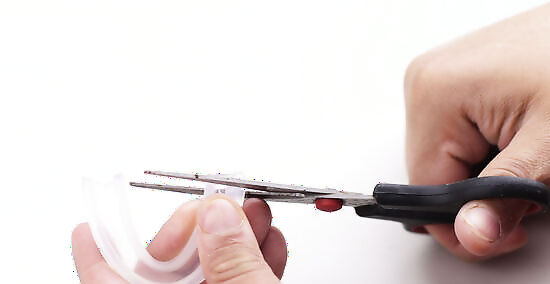
Trim around ⁄2 centimetre (0.20 in) off the ends of the mouthguard. Take the mouthguard out of your mouth. If it was too big or felt uncomfortable, use a pair of sharp scissors to remove around ⁄2 centimetre (0.20 in) from the end. Try to cut on an angle to mirror the tapering at the end of the mouthguard. Repeat for both sides until they are the same length. If you bit into the mouthguard and can see the impression of your teeth in it, trim the mouthguard so that it just covers your teeth. Any part of the mouthguard near the back that does not have a bite mark on it can usually be removed.
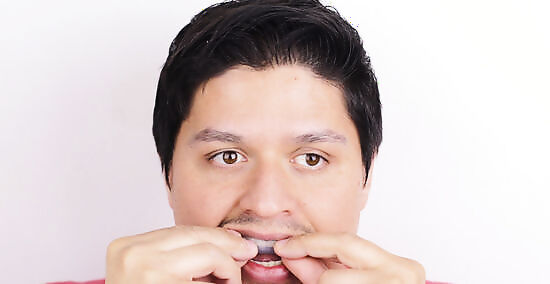
Test the mouthguard again. Put the mouthguard back in your mouth and move it around until it sits comfortably. If the mouthguard is still pressing against the back of your mouth, repeat the same process to remove another ⁄2 centimetre (0.20 in) at a time until it fits. Don’t worry if the cut is a little jagged, or if it feels strange against the back of your mouth at this point. Boiling the mouthguard in water to mold it will also help soften any rough edges. The mouthguard should only just cover your second molars when it’s at its perfect length.
Fitting Your Mouthguard
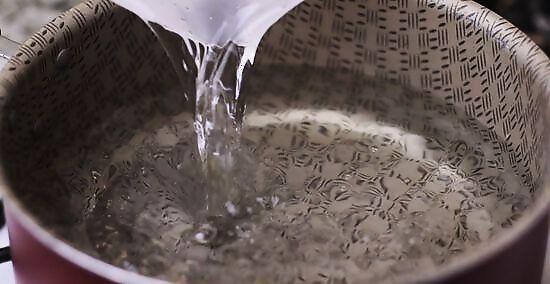
Bring a pot of water to the boil. Fill a saucepan or pot with around 10 centimetres (3.9 in) of water and place it over a medium-high heat. Let the water come to a rolling boil, before turning off the heat to stop it from boiling too vigorously. Make sure there is enough water in the pot to fully submerge your mouthguard in. If you don’t have access to a stovetop or something similar, you can use a microwave to boil the water. Microwave the water in a microwave safe bowl for 4 to 5 minutes, or until the water begins to boil.
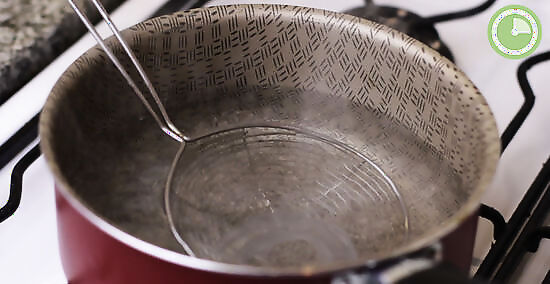
Submerge the mouthguard in the water for around 30 seconds. Use a slotted spoon or something similar to lower the mouthguard into the boiling water. Set a timer for 30 seconds and let the mouthguard sit in the water, stopping it from touching the sides as much as possible. If you’re using a mouthguard designed for playing American Football or something similar, you can use the strap on the front of the guard to hold the mouthguard in the water. Always follow the manufacturer’s instructions when boiling your mouthguard. Most will require that they’re boiled for around 30 seconds, but some may take more or less time.
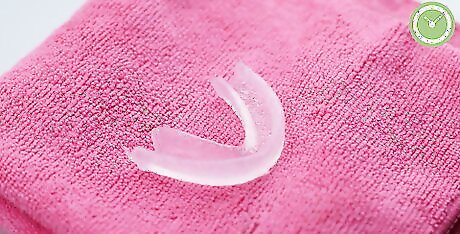
Remove the mouthguard from the water and let it cool for 20 seconds. Carefully lift the mouthguard out of the water and place it onto a clean, dry towel. Use the edges of the towel to dry off the mouthguard slightly, removing any boiling water and letting it cool down. The mouthguard should be warm to the touch, but not hot. Avoid moving the mouthguard around too much, as you may mold it too much while it’s still hot. You can also dip the mouthguard into cold water for 1 second to cool it off and wash away any boiling water.
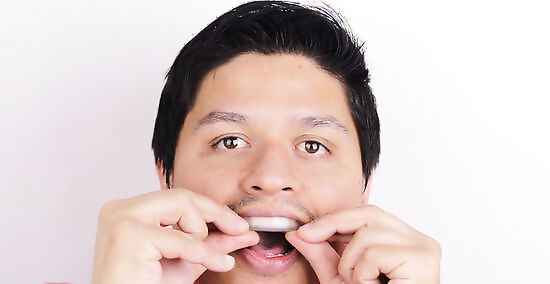
Press the mouthguard against your teeth. Place the mouthguard back in your mouth and begin pressing it into place around your teeth. Use your fingers and tongue to mold the edge of the mouthguard to your top teeth, and bite lightly into it to mold it to the shape of your bottom teeth as well. Once you put the mouthguard in your mouth, you’ll only have around 30 seconds before it becomes too cool to easily mold. Work quickly to shape it to each of your teeth.

Suck the excess water out of the mouthguard to tighten it. As you are pressing the mouthguard into place around your teeth, use a sucking or swallowing motion to draw out any water between your teeth and the mouthguard. This will tighten the guard to your teeth and help mold it perfectly to the shape of your mouth.

Place the mouthguard into cold water to set it fully. Take the mouthguard out of your mouth and place it into a bowl of cold water. Leave it to sit for around 30 seconds in the cold water to make sure it sets fully. If the mouthguard isn’t quite right, you can repeat the process of boiling and molding it to reshape your mouthguard again.
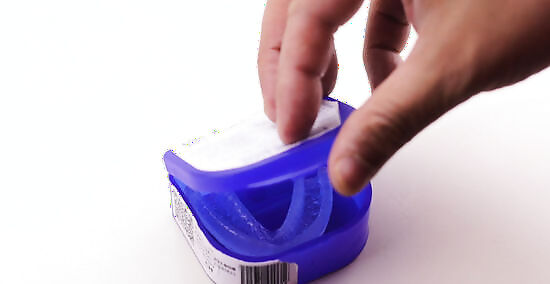
Store the mouthguard in a well-ventilated place. Make sure the mouthguard is completely dry before storing it in a clean, dry place. Use a plastic box with ventilation holes in it to allow the mouthguard to stay dry between uses and prevent the build-up of mold or bacteria.
















Comments
0 comment